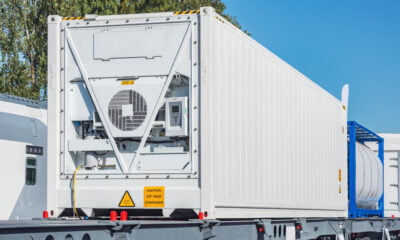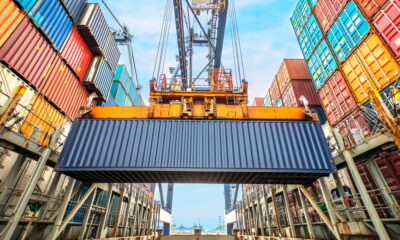The global economy relies heavily on shipping. Consequently, there have been many discussions on shipping sustainability and the need to reduce CO2 emissions to safeguard the maritime environment from further pollution in the face of the difficulties ahead.
One of our century’s most pressing issues is how to get people and products from point A to point B safely and affordably. For example, transporting goods by ship is generally safe and clean compared to other forms of transportation. Nonetheless, it has a substantial adverse effect on the environment. Therefore, there must be a change in how the industry conducts business.
Sustainable Shipping
In the shipping sector, sustainable shipping encompasses any method of shipment that is environmentally friendly. Sustainable shipping methods decrease environmental consequences such as fuel consumption and CO (carbon monoxide) emissions.
The use of less carbon dioxide-emitting energy sources, such as natural gas or propane, can help make transportation more environmentally friendly.
This can be done by walking, bicycling, carpooling, taking public transit, and so on. In addition to lowering the weight and CO emissions produced by freight handling, this can be done by reducing the size of the package.
If one firm starts employing sustainable ways, it can motivate others to do likewise, ultimately leading to more enterprises adopting sustainable measures. However, there has been increased environmental awareness among the marine construction industry to improve efficiency and decrease waste.
How to Make Overseas Shipping More Sustainable
Here are a few things you can do to make overseas shipping sustainable.
Management of Ports
The port’s administration can be more efficient by better managing space and resources. This reduces the amount of time and money wasted on mistakes. Environmental impact studies provide a clearer picture of the best practices for reducing emissions and enhancing long-term viability.
Hydrodynamics
The shipping sector has sophisticated resources but more subtle ones. The shape of ships serves as a metaphor for a method. To reduce emissions, altering the hull’s shape to sail more smoothly in the water increases speed.
On the other hand, biocide-free products can boost fuel economy and function. This low-cost gadget aids shipping in its quest to become more environmentally friendly.
Modifications
Many maritime liners are of an older design. Therefore, they use outdated operating methods. However, solar power can be used on newer ships. An auxiliary wind propulsion device that is known as “rotor sails,” can lower fuel usage. As a result, fuel consumption and pollutants will be reduced by 5 to 20 percent.
Smart Container
An AI-powered shipping container provides end-to-end visibility and traceability. This solution will lower their risks and respond more quickly in the face of supply chain incidents. The smart container minimizes transportation expenses while monitoring what is occurring to the container and the contents in real-time. It can also carry delicate items safely, thanks to its foam insulation.
Fuel Management
Many cargo ships use oil that pollutes the atmosphere and waters. Hydrogen fuel is a more robust and environmentally friendly alternative. Ships like automobiles can only be powered by electricity. Battery-powered ships are another example of a more environmentally friendly approach.
Eco-friendly Packaging
The packaging is essential to ensure the shipment’s safety and avoid shipping damage. The packaging you use, including plastic bags and bubble wrap, may significantly impact retail package waste.
Many eco-friendly solutions exist to assist you in making better decisions for the future of our world. For example, using environmentally-friendly materials, such as compostable mailer bags and biodegradable packing foam, can help you reduce your carbon footprint.
When shipping your items in eco-friendly packaging, you utilize environmentally friendly materials such as boxes, mailers, and other supplies to reduce the environmental effect.
Compostable Mailers
For e-commerce businesses who want to take the next step toward being more environmentally friendly, biodegradable envelopes are an excellent option. Additionally, you can customize the unboxing experience for your consumers by using your company’s logo. Recycled plastics can be used to create these mailers, keeping with the e-commerce industry’s commitment to environmental sustainability.
Cardboard
If you are shipping overseas, cardboard boxes are a must because they are reusable and kind to the environment.
Kraft-paper
Internal packaging can use this material without the usage of plastic.
Recyclable Tape
Recyclable paper tape is now widely available at all packaging supply shops.
Newspaper
Old newspapers are eco-friendly packing materials that most of us do not know.
Reduce Packaging Size
Unfortunately, packaging a small item in a large box is common error companies make. Make sure you use a box that is the proper size and has as little open space as possible within it. Smaller parcels have a smaller environmental footprint, which means they have a lower environmental effect. The more efficiently each box is packaged, the more packages can be transported by aircraft or container ship. Reduced package size will make international package shipment much more efficient, even reducing shipping costs.
Reuse Packaging Materials
For a long time, we have associated the concept of “reusability” with “sustainability”. And it is, without a doubt, the key to more environmentally friendly shipping. If you get a lot of shipments, you will likely get many packing materials. Do not throw away the packing materials when you get a box. Instead, save them for later.
For example, foam wrap, kraft paper, or packing peanuts can be used for multiple shipping without losing their effectiveness. You will be helping the environment by reducing the negative effect of manufacturing packaging materials and the use of plastics. Additionally, you will save money by not purchasing packing materials as frequently.
Decline Fast Deliveries
Suppose you are used to receiving international delivery in two or three days. In that case, you should be aware that this practice is incredibly destructive to our environment, particularly in terms of climate change. It necessitates a much speedier transportation procedure. Do not send the box if you do not have to deliver it in the next few days, for example. It is wasteful of both your money and the resources of our environment. So, think about whether or not the expedited shipment is required.
Consolidate Packages
By delivering items in bulk and combining packages, you may reduce the resources utilized for package transportation. Shipping more than one item in a box, or combining numerous items into a single shipment, is a wise financial and environmental investment. It is just necessary to plan ahead of time to combine your shipments.
Appreciate Customers to Reuse and Recycle
Packing materials are very environmentally beneficial since they can be reused for several shipments. Providing clients with information on how they can reuse packing materials for their shipment will empower them to do their bit in preserving the environment. Customers can also be encouraged to recycle by providing adequate information.
Conclusion
Sustainability in transportation is a significant concern nowadays. Aside from being environmentally friendly, shipping is one of the safest and most environmentally friendly ways of transportation. The industry must, however, act more sustainably. To have valuable, long-term sustainable shipping, a positive attitude and sufficient resources are required. Happy shipping!


































